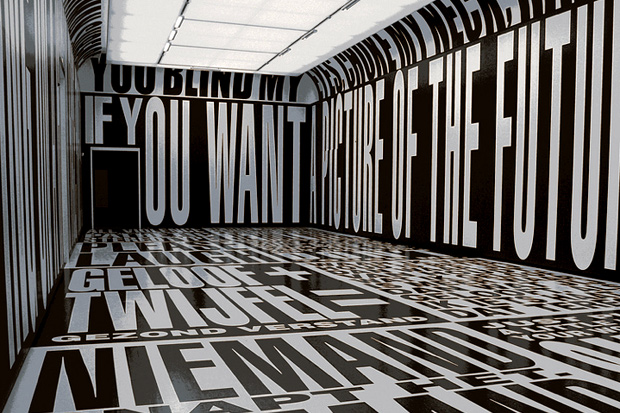JUXTAPOZ: Shepard Fairey on Barbara Kruger
In the 2010 November issue of JUXTAPOZ magazine, Shepard Fairey shares with readers the

In the 2010 November issue of JUXTAPOZ magazine, Shepard Fairey shares with readers the influence of female artist Barbara Kruger on not only himself but the whole of the street art community. With excerpts of the article seen below in addition to a full interview in the November issue, Fairey states the impact that Kruger has had for not only women but also the provocation that her art has achieved on a cultural level. The whole interview is available now in JUXTAPOZ’s November 2010.
Barbara Kruger might not be a name you know, but you probably know her work and/or the many stylistic imitations she has inspired. She is one of my biggest influences. My OBEY type logo and the Supreme logo were inspired by Kruger’s work. I owe my red, black, and white color palette to Russian Constructivism and Barbara Kruger. When I first started doing street art In the late 80’s and early 90’s I saw countless knock-offs of Kruger’s style for college campus political statements and posters of dissent. Kruger’s style was eye catching and seemed to universally say “pay attention and take this seriously”.
Kruger has made a tremendous impact in several key areas of contemporary art: graphic design and appropriation, public address, and political content. I feel strongly that in the wake of Pop Art and the art world acceptance of the pop cultures vernacular it utilized, that fine art has increasingly been defined by intent rather than a traditional “art” aesthetic or particular technique like painting. Kruger’s background in graphic design and advertising enhanced her astute recognition of the power of words and images to control, to arouse desires, and to define and reinforce stereotypes. For Kruger, working inside the advertising world was the perfect training for her to understand the techniques of manipulation, and to then illuminate and undermine them with her own subvertising art.
Though Kruger’s work may have inspired organizations like Adbusters, her art goes beyond parody because it targets pervasive aspects of our cultural psychology rather than specific products which are more of a by-product of our psychology, but reinforces it none-the-less. Kruger’s works, like almost all ads, utilize text and images, but the intent of the work is very different from advertising. Where advertising aims to make people think the answers to their problems lie in escapist consumption, Kruger shrewdly uses the visual language of advertising to pull back the curtain and force the viewer to analyze its machinations. Kruger appropriates images that may have originally supported another narrative, but can lend themselves powerfully to Kruger’s own narrative, which may call into question the agenda of the image as it relates to societal norms.
To read the rest of the article, head over to JUXTAPOZ
